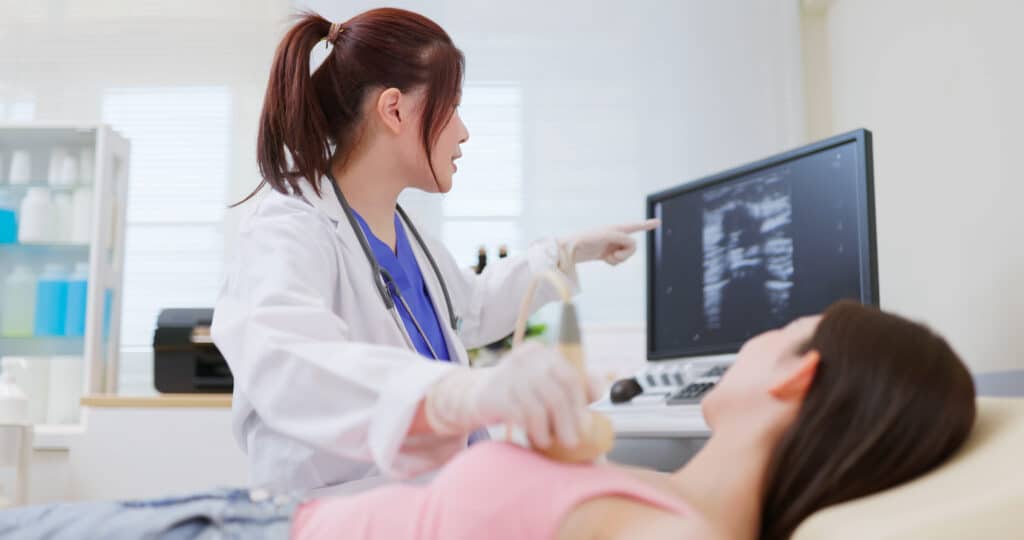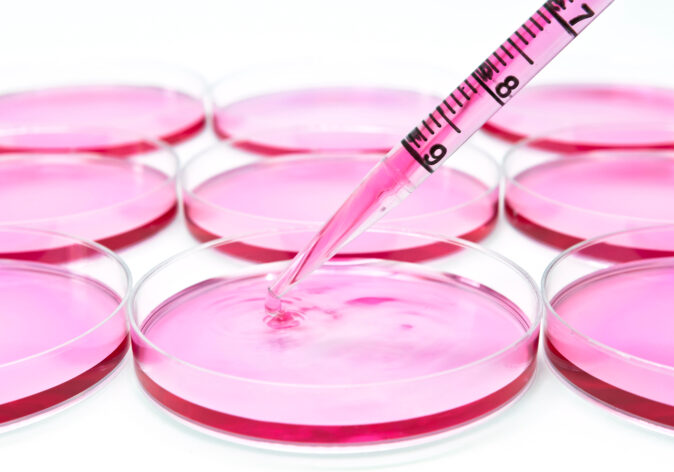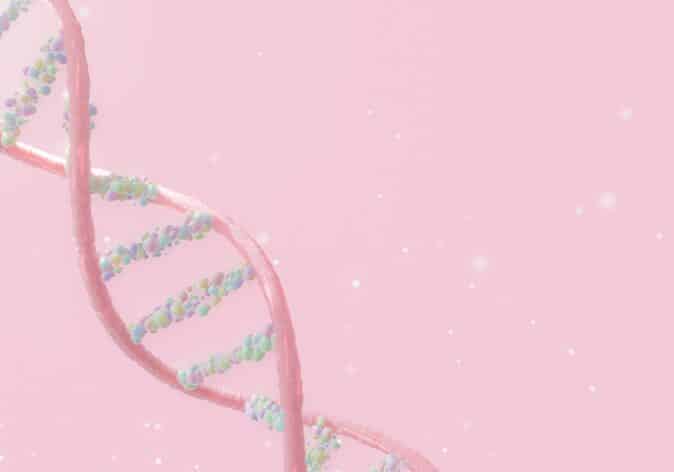What is a Breast Cancer Ultrasound?
A breast ultrasound is a non-invasive imaging procedure that uses high-frequency sound waves to create detailed images of the breast tissue. In contrast, a mammogram uses X-rays and is associated with a very small amount of radiation, and an MRI (magnetic resonance imaging) uses powerful magnets and radio waves but no radiation. Each breast imaging modality creates a different picture of the breast and has unique strengths and limitations.
A breast ultrasound plays an important role in breast cancer detection, particularly for those with dense breast tissue or other risk factors, by providing additional information beyond what mammograms can offer.
Breast ultrasound can be used as a standalone test to investigate a breast symptom, like a lump or change to the nipple, or as a follow up test to investigate a suspicious area on a mammogram. It can also be used to guide a biopsy of an area of concern.
Breast cancer screening involves a mammogram of the breast which has the best evidence for early detection of breast cancer for women over the age of 50. This may lead to an ultrasound or in certain circumstances other breast imaging like an MRI. Screening is vital for early detection, especially for those with a family history of breast cancer or other risk factors. Early detection greatly improves the chances of successful treatment.
One of the main advantages of ultrasound is that it is painless, widely available, and does not use ionising radiation. By providing real-time images of breast tissue, it is useful for distinguishing between suspicious solid masses which may be cancerous and fluid-filled cysts which are often harmless.
Can an Ultrasound Detect Breast Cancer?
A breast ultrasound is an important tool for detecting breast cancer. It can provide information about a mass, and the presence of suspicious features may indicate the need for a biopsy. It is very effective at distinguishing between suspicious solid masses which may be cancerous, and fluid-filled cysts which are often harmless. However, it is not always able to detect microcalcifications (certain patterns of tiny white small specks) visible on mammograms which can be very early signs of cancer.
An ultrasound is often used in combination with a mammography because the two imaging techniques complement each other and increase the accuracy of breast cancer diagnosis. It is especially valuable in women with dense breast tissue or when investigating lumps.
Ultrasounds cannot definitively diagnose breast cancer but can provide essential clues about a mass’ characteristics, such as whether it is solid or cystic. A biopsy is always required to confirm the final diagnosis of breast cancer.
Ultrasounds can also be used to detect whether there are abnormal lymph nodes under the arm in patients with a confirmed breast cancer diagnosis. Whilst this is also not definitive, it is important in determining the breast cancer stage and treatment strategies.
How Does an Ultrasound Detect Breast Cancer?
An ultrasound is helpful in assessing abnormalities in breast tissue. It provides insights into the size, shape, and texture of potential abnormalities, helping doctors determine the need for further testing. Sometimes it can help rule out cancer by offering an alternative diagnosis, avoiding the need for a biopsy.
What Does Breast Cancer Look Like on an Ultrasound?
Using sound waves, an ultrasound can provide information about the features of a breast mass that may not be apparent on a mammogram, especially in denser breast tissue. Breast cancer on ultrasound may appear as an irregularly shaped mass with uneven borders. It can also be echogenic, meaning it reflects more of the sound waves than normal tissue, invade surrounding tissues and have increased blood supply. These characteristics often stand out compared to benign conditions.
Types of Breast Ultrasound and Their Role in Breast Cancer Diagnosis
Different types of ultrasounds are used in breast cancer diagnosis, each serving a specific purpose.
- Diagnostic ultrasound: Used to investigate a breast problem like a lump or nipple changes, or suspicious findings from a mammogram.
- Ultrasound-guided biopsy: Used to direct a needle into a suspicious area of the breast to collect a small sample for laboratory testing. This is useful if the suspicious area cannot be felt or seen on a mammogram.
- 3D ultrasound: Provides three-dimensional images of the breast to improve the detection of small tumours.
How Ultrasound Supports Early Detection of Breast Cancer
When a breast ultrasound is coupled with screening mammography it assists in the early detection of breast cancer. The presence of suspicious features on ultrasound make the diagnosis of breast cancer possible which means that a biopsy may be required. Ultrasound is particularly useful to provide additional information about a mass over what is found on a mammogram, especially for women with dense breast tissue where mammograms might not show all abnormalities.
Ultrasound guided biopsies also play an important role in the early detection of breast cancer as a biopsy is required to diagnose breast cancer. This is particularly useful when the breast mass requiring biopsy cannot be felt or seen on a mammogram.
Breast MRI vs. Ultrasound: What’s the Difference?
Both breast MRI (magnetic resonance imaging) and ultrasound are important imaging tests used in the detection of breast cancer, but they serve different purposes and have unique advantages.
Breast MRI:
Breast MRI is highly accurate and can detect even very small breast cancers, making it especially useful for women with dense breast tissue or those at elevated breast cancer risk. It uses powerful magnets and radio waves to create detailed images of the breast tissue and is particularly effective at identifying abnormalities that may not be visible on mammograms or ultrasounds. However, breast MRI is more expensive, less widely available, and may not be necessary for everyone.
Breast ultrasound:
Ultrasound, on the other hand, is more accessible and cost-effective, and is excellent at distinguishing between solid masses which may be cancerous and fluid-filled cysts which are usually harmless. While an ultrasound may not detect as many small breast cancers as MRI, it is a valuable tool for evaluating breast lumps and guiding biopsies.
The decision between breast MRI and ultrasound often depends on factors such as breast density, personal and family history, and overall risk of breast cancer. In some cases, these imaging tests are used together to provide the most comprehensive assessment of breast health and make a treatment plan.
Help Us Advance Treatments for Breast Cancer
At Breast Cancer Trials, we are dedicated to improving breast cancer treatments and outcomes through life changing clinical research – working towards a future where no more lives are cut short by breast cancer. Support our life-changing research with a donation today.
Frequently Asked Questions (FAQ)
What makes a breast lump suspicious on ultrasound?
On an ultrasound, certain characteristics of a breast mass can raise suspicion for breast cancer. Radiologists evaluate these features to decide if further testing, such as a biopsy, is necessary. These can include:
- Shape: Suspicious masses are often an irregular shape, whereas benign lumps are usually round or oval.
- Margins: Cancerous masses may have jagged or ill-defined edges, while benign lumps tend to have smooth and well-defined borders.
- Echogenicity: Cancerous masses may appear hypoechoic (darker) compared to surrounding tissue and may display shadowing on the ultrasound.
- Growth Patterns: Cancerous masses may invade surrounding tissues, altering their appearance on ultrasound. Benign lumps typically remain confined.
- Vascularity: Doppler ultrasound may show increased blood flow in or around a suspicious mass, indicating possible malignancy.
This process helps assess whether a breast cancer lump on ultrasound may need further testing or biopsy.
What does breast cancer look like on an ultrasound?
Breast cancer on an ultrasound may appear as an irregular, hypoechoic mass with spiculated or ill-defined margins. These features differ from benign lumps, which tend to be smooth and well-defined. Malignant tumours may also invade nearby tissue and show increased vascularity.
While ultrasound is not used for routine screening, it is often helpful in investigating breast lumps and reaching a diagnosis in women with dense breast tissue.
What can a breast ultrasound detect?
A breast ultrasound can detect:
- Solid masses (which may be cancerous)
- Fluid-filled cysts (usually benign)
- Changes in lymph nodes
- The exact location of an abnormality for biopsy
It’s especially helpful when a lump cannot be clearly identified through a mammogram.
Early stage breast cancer ultrasound: What role does it play?
While an ultrasound is not used for screening or detecting early-stage breast cancer on its own, it plays a critical role in investigating suspicious findings. When paired with mammography, ultrasound can offer additional detail about a mass and guide biopsy, particularly in dense breast tissue.
Sources:
- https://www.breastscreen.nsw.gov.au/breast-cancer-and-screening/signs-and-symptoms-of-breast-cancer/
- https://www.cancer.nsw.gov.au/prevention-and-screening/screening-and-early-detection/breast-cancer-screening/why-breast-screening-is-important



